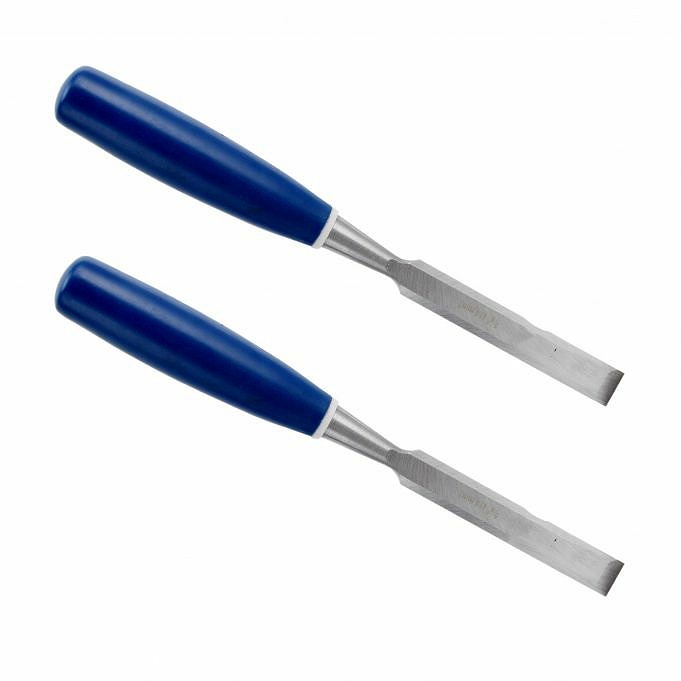A chisel must have a flat surface and a sharp edge to allow for good paring. For more information, see the flattening story. You can generally tell when your edge isnt cutting the way it should when paring end grain. The chisel should be sharpened if the grain begins to bend or collapse from the pressure of the chisel. I wont go into a long diatribe on sharpening here, but suffice it to say that if your chisels are coming up dull, you either need to increase the frequency or quality of your sharpening.
Light Chopping At some point, you will need to chopping wood with a bench-chisel. A half-blind dovetail joint is a good example of how to use chopping to remove wood. Other uses for chopping are defining a hinge mortise, low relief carving and through-dovetails.
When chopping, you can use the same force you would use when mortising, just not as often. Bevel-edged bench chisels shouldnt be used for mortising. They arent designed for this purpose. Mortise chisels have a steeper cutting angle ground on them: 30 compared to 25 for bench chisels. They have thicker blades with flat flat sides that can withstand a beating. To fit into tight spaces, bench chisels have thinner blades and are beveled at the sides.
Most bench chisel chopping consists of light tapping of the chisel to define a cut line or remove a small amount of waste. Chopping is the most intense use a bench chisel can make. Upon reading our reviews of 20 different bench chisels, only about half stood up to repeated medium/heavy chopping. To get an idea of the features to look out for when buying a bench chisel, read our review.
Before you start, ensure that your work is in direct contact with the ground. This means that you should place your work directly on top of the leg of a table or bench. This puts all the power of the blow directly into your cut, and not into flexing the bench’s top.
Mortising
Im sure that back in the days when all mortising was done with manual labor, there were large muscular blokes all hammering and chopping away. This is woodworking’s equivalent to heavyweight boxing. Both the chisel as well as the wood take a tremendous beating.
Mortising has one purpose: to make a square flat-sided hole in a piece of wood to receive a tenon. To that end, mortising chisels are the beefiest chisels you can buy. They are 30 mm in grind and have flat sides that can take a beating while mortising. A bench chisel, with its thin profile, is likely to wander in your cut, ruining your mortise. You should also be aware that you can hit a bench or mortising chisel just as hard as a mortising one, especially if it is smaller than? and 3/20 cm, they might actually fracture. The cutting edge can also be rolled or collapsed by repeated pounding with a bench chisel.
A 3/20 cm mortising chisel is recommended if you have one. Tenons are typically half the thickness of your stock, and most stock is ? thick. You will be hitting it hard with the mortising chisel that you purchase. Your hand will be the one that takes the brunt of the abuse if the handle is too small.
Mortising has three parts. One is light tapping. This is what defines the mortise and starts the mortise. One, heavy pounding. This is what most people think of when they talk about mortising. Three, paring. This is the only time you should use a bench chisel while mortising: to pare the sides of a mortise after chopping.
Jim Stuard is a former associate editor of .
Product Recommendations
These are the tools and supplies we use every day in our shop. Although we may be compensated for sales made through our links, these products have been carefully chosen for their utility and quality.



